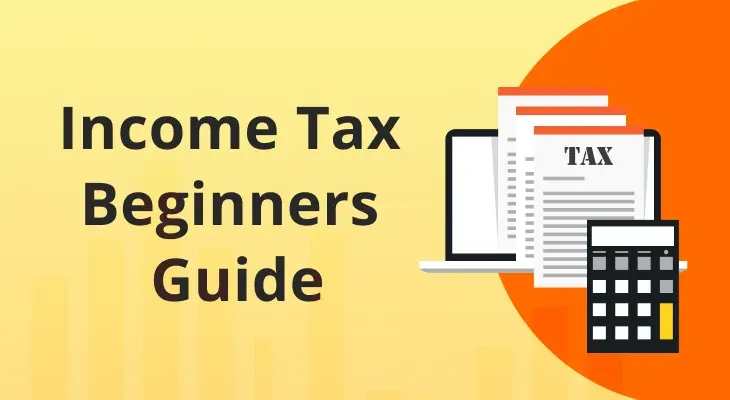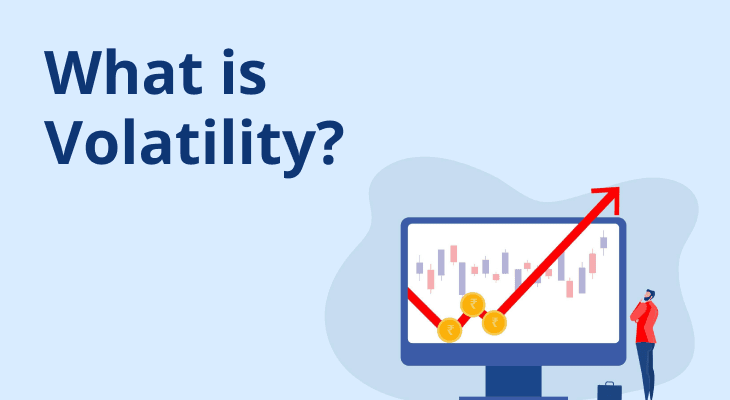
Table of content
- What is the meaning of ‘Financial Year’ and ‘Assessment Year’?
- Understand the Components of Your Salary
- Note on Standard Deduction
- Income Tax Slab Rate as per New Tax Regime FY 2024-25
- Income Tax Slab Rate as per New Tax Regime FY 2025-26
- Types of Income on Which Tax Needs to be Paid
- Deductions
- Tax Exemptions
- Section 80C: Your Best Friend
- Tax Deducted at Source (TDS)
- Advance Tax
- Self-Assessment Tax
- Categories of Taxpayers
- Calculating the Tax Payable
- Documents Required to File Income Tax Returns (ITR) in India
Basics of Income Tax for Beginners
Earning your first paycheck is a major milestone in life. Along with this milestone, there’s another turning point that you may go through around this time — that of paying income tax on your earnings. For beginners, the concept of income tax can be tough to grasp. However, this simple yet comprehensive guide on the basics of income tax for beginners can help you understand the fundamentals of taxation in India.
What is the meaning of ‘Financial Year’ and ‘Assessment Year’?
These are two of the most important concepts of income tax for beginners. They are the key to understanding which income tax return to choose and when to file the said return. Here’s what they mean.
Financial Year
The Financial Year (FY) is also known as the Previous Year for the purpose of income tax computation. It is the year for which the income is assessed and taxed. The Financial Year begins on April 1 of one calendar year and ends on March 31 of the subsequent calendar year. For example, FY 2022-23 extends from April 1, 2022 to March 31, 2023.
Assessment Year
The Assessment Year (AY) follows the Financial Year. It is the year in which the income earned in the Previous Year is assessed. You have to file your income tax returns in the relevant Assessment Year. For instance, for FY 2022-23, the AY is 2023-24 (ranging from April 1, 2023 to March 31, 2024).
Understand the Components of Your Salary
If you are a salaried individual, getting to know the components of your salary is an essential part of understanding the basics of income tax for beginners. Typically, your salary may be broken up into the following components:
Fully Taxable Components
Some components of your salary, such as the basic salary, dearness allowance, overtime allowance etc. are fully taxable.
Partially Taxable Allowances
There are some salary components like the House Rent Allowance (HRA) and the Leave Travel Allowance (LTA) that are only partially taxable.
Deductions
Apart from the allowances, there are also some deductions made from your salary, like professional tax and your contribution to your Employees’ Provident Fund account.
Note on Standard Deduction
Standard deduction is a special kind of deduction available to salaried individuals and retired people with pension income. As per this provision, a deduction of ₹50,000 is available to eligible taxpayers. The deduction is made from the gross salary.
Income Tax Slab Rate as per New Tax Regime FY 2024-25
India’s new tax regime for FY 2024-25 (Assessment Year 2025-26) offers simplified slabs with no surcharge and no need to claim multiple deductions, making it attractive for those seeking ease and lower compliance.
Taxable Income (₹) | Tax Rate (%) |
|---|---|
Up to 3,00,000 | Nil |
3,00,001 – 7,00,000 | 5% |
7,00,001 – 10,00,000 | 10% |
10,00,001 – 12,00,000 | 15% |
12,00,001 – 15,00,000 | 20% |
Above 15,00,000 | 30% |
Income Tax Slab Rate as per New Tax Regime FY 2025-26
For FY 2025-26 (Assessment Year 2026-27), the new tax regime has been further refined, raising the no-tax threshold and introducing new slabs for progressive taxation to benefit middle- and upper-middle-income groups.
Taxable Income (₹) | Tax Rate (%) |
|---|---|
Up to 4,00,000 | Nil |
4,00,001 – 8,00,000 | 5% |
8,00,001 – 12,00,000 | 10% |
12,00,001 – 16,00,000 | 15% |
16,00,001 – 20,00,000 | 20% |
20,00,001 – 24,00,000 | 25% |
Above 24,00,000 | 30% |
Note: Unlike the Old Tax Regime, the tax slabs for all age groups are the same in the New Tax Regime.
Types of Income on Which Tax Needs to be Paid
The next important part of income tax basics for beginners involves getting to know the types of income on which tax is levied as per the Income Tax Act, 1961. There are five heads of income that you need to pay tax on.
Income From Salaries
This includes all the income you earn as a part of your salary. Pension income is also grouped under this category.
Income From House Property
Any rental income you earn from the house properties you own fall under this category of taxable income.
Profits And Gains From Business Or Profession
If you are self-employed as a professional or if you run your own business, the profits you make from your business or profession will be taxed in this category.
Capital Gains
If you make any gains from the sale of a capital asset (such as equity shares, land or a house property), the profits are taxed as capital gains.
Income From Other Sources
Any other income that does not fall in the above five categories are considered as income from other sources and taxed accordingly.
Deductions
The Income Tax Act, 1961, also has provisions for various deductions, which help bring down your total taxable income. Learning about these deductions is also an important part of understanding income tax for beginners. These deductions are mostly contained within Chapter VI A of the Act, from sections 80C to 80U.
The sum of the earnings under the five heads of income discussed above is called the gross income. Here is how the deductions feature in your income tax calculation.
Gross Income – Deductions = Taxable Income
Tax Exemptions
If you’re learning about the basics of income tax for beginners, exemptions are also an important part of the journey. Unlike deductions, which are subtracted from the gross income, exemptions are those types of incomes that are not taxable at all, in the first place.
Some types of income are fully exempt (like agricultural income or the proceeds received as death benefits from a life insurance policy). Others, like the House Rent Allowance (HRA) are partially exempt from tax.
Section 80C: Your Best Friend
Section 80C of the Income Tax Act, 1961, is one of the most important concepts of income tax for beginners. This section contains a comprehensive list of deductions for various investments and expenses. Some of the deductions allowed under section 80C of the Income Tax Act, 1961, are listed below.
Premiums paid for life insurance
Principal component of home loan repayment
Investment in Public Provident Fund (PPF)
Investment in Employees’ Provident Fund (EPF)
Investment in National Savings Certificate (NSC)
Investment in Senior Citizen Savings Scheme (SCSS)
Investment in 5-year tax-saving fixed deposit
The maximum deduction you can claim under section 80C is ₹1.5 lakhs during any given financial year. Also, you can only claim these deductions if you opt for the old tax regime.
Tax Deducted at Source (TDS)
No discussion about the basics of income tax for beginners is complete without the mention of tax deducted at source (TDS). As the name indicates, TDS is simply tax deducted at the source of an income, before it is paid out to the recipient. The Income Tax Act, 1961, lays out the incomes for which tax must be deducted at source, as well as the TDS rate.
Here are some types of income for which tax is deducted at the source.
Salary income
Rental income
Insurance commission
Interest on bank deposits
Brokerage or commission
Prize money obtained from winning a lottery, crossword puzzles or other games
Advance Tax
Advance tax is another important concept in income tax for beginners. This is a kind of income tax that needs to be paid in advance, at different points during the financial year. Any taxpayer whose tax liability exceeds ₹10,000 during the FY needs to pay advance tax in 4 installments, as shown below.
Installment | Due Date | Amount to be Paid |
|---|---|---|
1st installment | 15th June | 15% of the advance tax |
2nd installment | 15th September | 45% of the advance tax |
3rd installment | 15th December | 75% of the advance tax |
4th installment | 15th March | 100% of the advance tax |
Self-Assessment Tax
Self-assessment tax is another key aspect of the basics of income tax for beginners. The term refers to the balance tax that you need to pay, after accounting for the advance tax paid and the taxes deducted at source. The self-assessment tax must be paid before you file your income tax returns for any given assessment year.
Categories of Taxpayers
The Income Tax Act, 1961, also recognises different categories of taxpayers based on their age and residential status. The rate of tax applicable depends on the category that a taxpayer belongs to. These categories are:
Resident and non-resident individuals below the age of 60
Senior citizens aged 60 years or more, but below 80 years of age
Super senior citizens aged 80 years or more
Calculating the Tax Payable
The tax payable is calculated on the total taxable income, at the income tax slab rate applicable to you. The slab rate depends on the tax regime you choose, your age and your total taxable income. The rates applicable are tabulated below.
| Income Slab |
| Rates as per the New Tax Regime | |||||
|---|---|---|---|---|---|---|---|
| Below ₹2,50,000 |
| Nil | |||||
| ₹2,50,001 to ₹3,00,000 |
| 5% | |||||
| ₹3,00,001 to ₹5,00,000 |
| 5% | |||||
| ₹5,00,001 to ₹7,50,000 |
| 10% | |||||
| ₹7,50,001 to ₹10,00,000 |
| 15% | |||||
| ₹10,00,001 to ₹12,50,000 |
| 20% | |||||
| ₹12,50,001 to ₹15,00,000 |
| 25% | |||||
| Above ₹15,00,000 |
| 30% |
Documents Required to File Income Tax Returns (ITR) in India
Once you have paid your income tax, you also need to file your income tax returns (ITRs) within the due date. The details about income tax returns for beginners may seem confusing. However, once you know what it is and when to file it, you’ll find it’s fairly simple.
The income tax return is a form that taxpayers need to submit to the Income Tax Department. It contains the details of your income, tax deductions, tax paid and refund due, if any. The due date for filing the ITR is generally July 31 of the relevant assessment year for individual taxpayers who do not require any tax audit.
The following documents can make it easier to fill in income tax returns for beginners.
Income From Salaries
Form 16
Form 16A
Form 26AS
Payslips
Proof of investments made under Chapter VI A of the Income Tax Act, 1961
Income From House Property
Rental receipts
Proof of home loan repayments
Capital Gains
Documents that act as proof of purchase of the capital asset (like purchase deed, mutual fund statement etc.)
Documents that act as proof of sale of the capital asset (like sale deed)
Capital gains statement
Income From Other Sources
Bank FD Receipt
Bank statement
An Income Tax Calculator helps you estimate how much tax you need to pay based on your income, deductions, and exemptions. Use our Income Tax Calculator to understand your tax liability better and plan smarter to save more.
FAQ
How can I claim an income tax refund?
If you have paid excess tax, you can file your income tax return and select the refund option. The Income Tax Department will process it and refund the amount to your linked bank account, typically within 30 days after processing your ITR.
Can I claim deductions under both tax regimes?
No. Deductions like Section 80C are not permitted under the new tax regime. You must choose either the old regime (with deductions) or the new regime (simplified slabs), and can’t claim benefits from both in the same year.
What are income tax slabs and rates applicable for FY 2024–25?
Under the new tax regime for FY 2024-25, income up to ₹ 3 lakh is tax-free. Beyond that, the rates are 5%, 10%, 15%, 20%, and 30%, depending on your bracket. See the slab table above for full details.
How do you calculate income tax for beginners?
Calculating tax is simple: identify your taxable income and match it to the correct slab. Multiply the portion in each slab by the applicable rate and sum the results. Then deduct any tax rebates or credits applicable under Section 87A, if eligible.
How do I pay tax for the first time?
If your estimated tax liability exceeds ₹ 10,000 during the financial year, you must pay advance tax, split in four installments. After that, file your ITR by the due date. If tax remains due, pay it along with applicable interest before filing the return.
What is Section 87A rebate and who can avail it?
Under the new tax regime, for the financial year 2024-25, Section 87A provides a rebate of up to ₹ 60,000 for resident individuals with taxable income up to ₹ 12 lakh, effectively ensuring zero tax liability for salary earners under the new slabs.
Are surcharge and cess considered in these slabs?
The tables reflect base tax rates under the slabs. Additional surcharge and health and education cess (4%) apply as per taxable income and existing norms, though the tables themselves exclude these for simplicity.
Can salaried individuals still claim standard deduction?
Yes. Even under the new tax regime, salaried individuals and pensioners can claim a standard deduction of ₹ 60,000 (for FY 2024-25) and ₹ 75,000 (for FY 2025-26) to reduce taxable income, making it easier to reach lower-tax slabs.
How is taxable income determined?
Begin with your total income (salary, interest, rental, capital gains), subtract eligible deductions (like standard deduction), to find your taxable income. This figure is then used to compute tax liability using the slab rates and rebate eligibility.
What is the last date to file income tax returns for FY 2024–25?
For most individual taxpayers, the last date to file income tax returns for FY 2024–25 is 15 September 2025, unless the government extends it. Filing early helps avoid last-minute technical issues, penalties, and interest charges. Taxpayers with accounts subject to audit may have a different due date.


